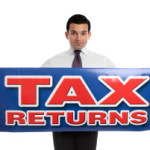A Self Managed Super Fund (SMSF) is your ticket to a stable retirement. The federal government wants us to set up our own Superannuation fund and for that it is quite willing to lay various tax perks ahead of us. Some of us, however, give credibility to the myth that managing SMSF is a time-consuming process. This is far from the truth. Let us find out why the myth needs to be busted before it does any more harm. Also, let us read about that one particular way of saving our personal time and effort when managing SMSF.
Setting up a Self Managed Super Fund
While the major reason for setting up a Super fund can vary from person to person, there is a consensus that such funds are most often set up for the purpose of saving on taxes.
The necessities, obligation and rewards of setting up a Self-managed Super fund are delineated in a publication of the ATO. This document can be downloaded (PDF).
It then is time to ponder the reasons for starting a SMSF.
Starting a SMSF
Many employees would vouch for the fact that employer contributions are too thin for their comfort. If they had to go by these contributions, it would become difficult to provide oneself with even a decent retirement. SMSF, to reiterate, is your roadmap to a comfortable retirement. There are quite a few notable asides, too.
Superannuation tax rate pretty low for SMSF
 SMSF contributions stashed away from your regular income are taxable at 15%, which is lower than the marginal tax rate. However, it may be wise to keep in mind that there are restrictions imposed on the maximum amount that can be contributed each month.
SMSF contributions stashed away from your regular income are taxable at 15%, which is lower than the marginal tax rate. However, it may be wise to keep in mind that there are restrictions imposed on the maximum amount that can be contributed each month.
Self-managed Super offers great flexibility
Being the trustee of your fund yourself, you are well within your rights to alter your portfolio and investment strategy in sync with your financial requirements. You will also have full control over the structure of your portfolio till the time you are meeting regulatory obligations. It is worth noting that unlike industry funds, the SMSF sector is not governed by prudential regulations and hence it is important to do your digging and ensure that you are compliant at all stages. Of course, the ATO does more than its share to keep the SMSF trustees on their toes.
Self Managed Super investment strategy
A Self-managed Super is set up with a minimum of one member and a maximum of four members. If the members share the same goals, they can accumulate their resources in a collective pool and begin their ‘selfie’. SMSF offers full flexibility to alter the allocation of assets; this again, till the time the allocation is not in contrast to the declared investment strategy. It is worth noting that for the self-managed Super funds, the expenses made towards administration are exempt from taxes.
After retirement, you can get tax rebates on dividends that come from portfolio holdings. When you are setting up a fund for your children, it may be wise to consult professionals who can tell you exactly under what conditions they can access the funds.
SMSF tax return: rebates and contributions
 As mentioned earlier, the chief benefit of setting up a SMSF is the various tax perks that come your way. You are not paying the marginal tax rate; in fact, it is much lower than that and it only gets better as you move from the accumulation phase to the pension phase.
As mentioned earlier, the chief benefit of setting up a SMSF is the various tax perks that come your way. You are not paying the marginal tax rate; in fact, it is much lower than that and it only gets better as you move from the accumulation phase to the pension phase.
Contributions tax
Contributions, with regards to SMSF, can be of two types: concessional and non-concessional contributions. The concessional contributions include contributions made by the employer (this can further include salary sacrifices). There is an annual ceiling for concessional contributions and it is pre-determined by the ATO. Post 1st of July, 2014, this ceiling has been set at $30,000 per year. Those members who are at or above the age of 49 can enjoy a higher cap ($35,000). The tax rate for concessional contribution is 15%.
Next are the non-concessional contributions. Tax rebates cannot be claimed for these contributions from the members. It is natural then that these contributions are not added to the assessable income of a SMSF. For a period calculated over three years, the cap for those members under the age of 65 is $540,000 (Post 1st July, 2014). If the members of the fund are between 65 and 75 years of age, the cap is $180,000 per fiscal year. If, however, your contributions cross the upper ceiling, you are liable to be taxed at 47% and it is for the fund to release the tax amount for excess contributions made.
Self Funded Super: income of the fund
Those SMSF assets which are there for paying the pension find that their income is exempt from taxes. This tax rebate can however be claimed only when the members start getting pension from their funds. If your SMSF is compliant, it will have the right to earn capital gains tax discount for every asset held for a period exceeding 12 months. The rebate is 1/3rd of the usual capital gains tax (can vary for different States). So how do you calculate the net capital gains tax? You just need to subtract the cumulative value of capital losses and tax discount from total gains made in the financial year.
SMSF compliance: deductions which can be included
 If the SMSF is compliant, it can subtract expenses made towards fund operation from its assessable income. These deductions can include, but are not limited to, expenses made towards income production, business expenses made for the same purpose, supervisory levy, auditor fees, accountant’s fee, investment expenses, administrative expenses, and insurance premiums under the subhead ‘Life’ and ‘Disability’. Obviously, these aspects are well-jotted on the website of the ATO.
If the SMSF is compliant, it can subtract expenses made towards fund operation from its assessable income. These deductions can include, but are not limited to, expenses made towards income production, business expenses made for the same purpose, supervisory levy, auditor fees, accountant’s fee, investment expenses, administrative expenses, and insurance premiums under the subhead ‘Life’ and ‘Disability’. Obviously, these aspects are well-jotted on the website of the ATO.
Requirements for setting up a Self managed Super fund
There are several advantages of setting up a SMSF, but it is to be noted that the entire process of managing a SMSF can be a time-consuming one. Being a fund trustee, it is your duty to be compliant (at all times). Apart from compliance, you have to stay on the right side of the fence when it comes to lodgement of income tax and annual reporting. For ensuring that there are no compliance breaches or fund contraventions made from your side accidentally, it may be a wise option to hire a fund manager.
Managed funds: hiring a fund manager does not make you any less an owner

Getting someone else to manage your show does not make the ‘self-managed’ any less of a selfie. It’s just that this way, you iron out any possible creases that may emerge later. After all, it cannot be doubted that professional assistance makes operation of a SMSF fund all the smoother. You will have to pay a fee to the fund manager for managing your funds. This amount can be paid each month or yearly or according to pre-stipulated arrangements.
If you think hiring a fund manager would mean you cannot decide which share to buy or sell, think again. The idea is to let a professional know what you have decided and 9 out of 10 times, the decision you arrive at by consensus will be better for your fund. This brings us to a very important question. What is SMSF compliance?
Complying Superannuation fund
For a SMSF which aims to be compliant, it is crucial to keep the financial transactions at arm’s length. Put another way, you cannot set up your business with a fund member or some other associate. Again, the fund manager is the right person to talk with with regards to compliance.
Self Manager Super Fund rules
 What are the must-haves for setting up a SMSF? A fund must have enough assets during start up to justify the expenses incurred under administration costs. The funds must also have enough liquid money to pay off accounting, tax, audit costs and fees for professional assistance. Trustees should be decently skilled in managing their portfolio. Fund members must have insurance (Life and Disability). Last but equally important: trustees of the fund must segregate personal and fund assets.
What are the must-haves for setting up a SMSF? A fund must have enough assets during start up to justify the expenses incurred under administration costs. The funds must also have enough liquid money to pay off accounting, tax, audit costs and fees for professional assistance. Trustees should be decently skilled in managing their portfolio. Fund members must have insurance (Life and Disability). Last but equally important: trustees of the fund must segregate personal and fund assets.
The process of setting up a SMSF, is, in itself, pretty straightforward.
Process of setting up a SMSF
Before anything else, appoint a trustee and create a Trust Deed. Next, open a bank account solely for the purpose of the SMSF. Once you are done, you can reach out to the ATO and get yourself registered.
SMSF investment strategy: invest in line with it
Next in line is creating an investment strategy. While SMSF offers full flexibility of making investment decisions to its members, it is important to note that such decisions should adhere to the investment strategy. Your strategy, per se, may differ depending on the stage of life you are in. Let us say you are pretty close to retirement. In such a case, you will be needing your investment in 5 years or even less. It may then be prudent to go for Cash or Conservative options. These are less-profit, less-risk ventures. Ideally, you must ponder over the figure that will ensure a comfortable retirement for you and make your Super investment strategy revolve around that figure.
Superannuation fund number
A SMSF can have 1 to 4 members. If the past has taught us anything, it is that members should have great chemistry between them, or conflicts could begin to harm the fund long before you figure them out.
A fund, to reiterate, does better with the help of a fund manager who can tackle tasks pertaining to accounting, administration and compliance.
Super funds in Australia need a fund manager for multiple reasons
 The manager also sees to the rollover of current SMSF assets, fund contributions and that they do not cross the caps, assessment of tax, its lodgement and reporting. Next, the fund manager ensures that assets are valued at par, prepares statement of finance, and appoints an auditor. It is not difficult to figure out that he/she can be indispensable for a fund unless one of the trustees is adequately skilled in the job.
The manager also sees to the rollover of current SMSF assets, fund contributions and that they do not cross the caps, assessment of tax, its lodgement and reporting. Next, the fund manager ensures that assets are valued at par, prepares statement of finance, and appoints an auditor. It is not difficult to figure out that he/she can be indispensable for a fund unless one of the trustees is adequately skilled in the job.
Buying property with Super
When it comes to including property within SMSF, there are tough guidelines a fund must adhere to. For one, the property in question must be for the sole purpose of offering retirement benefits to the members of the fund. It must not be procured from a member of the fund and no member should reside on the property. Such property must not be rented to any fund member or his associate. This said, the SMSF can buy a business premise. In such cases, members must pay rent to the fund (owner of the property) and such rate must be at par with the going-rate for the market.
Pension benefits
SMSF offers a slur of tax benefits and is well suited to fetch you a decent pension income. The importance of a fund manager in managing the fund cannot be overstated, whether you want to put in your money into ETFs, term deposits, shares or bonds.
Debunking the myth
 The myth regarding SMSF being a time-consuming venture has been circulating for long. Truth be told, it is among the most lucrative strategies of financial investment and this is the top reason why it has done so well in such a short amount of time. Fund managers can act as catalysts for your investments and hiring them does not mean losing out on even a fraction of your ownership. If anything, they help you sort out your investment strategy and cater to the technical side of fund management- all for the good cause of saving you time and effort.
The myth regarding SMSF being a time-consuming venture has been circulating for long. Truth be told, it is among the most lucrative strategies of financial investment and this is the top reason why it has done so well in such a short amount of time. Fund managers can act as catalysts for your investments and hiring them does not mean losing out on even a fraction of your ownership. If anything, they help you sort out your investment strategy and cater to the technical side of fund management- all for the good cause of saving you time and effort.



